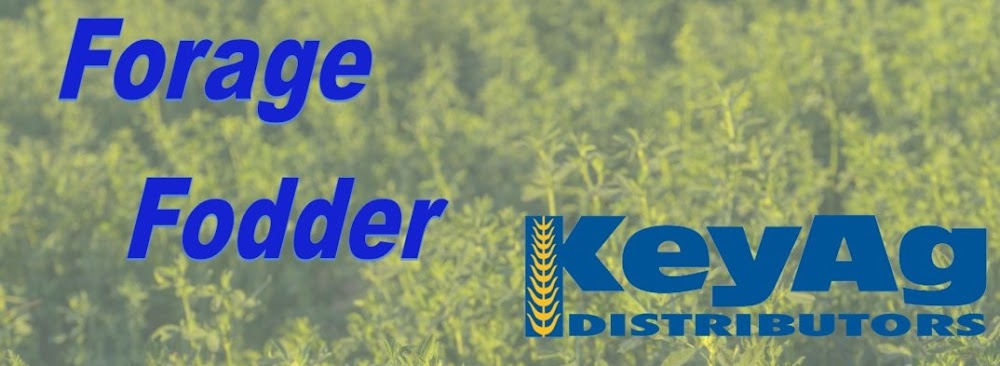Untimely rains occurred throughout the Northwest. Although quality was lower across all cuttings, yields were strong and prices held steady given lower supplies of supreme quality hay. Producers are unlikely to bolster high quality hay inventory in late cuttings.
Montana experienced rain throughout third cutting, hindering harvest and producing limited high quality hay. Also, late August hailstorms leveled portions of the hay crop. Overall yields were strong despite weather damage. Current alfalfa prices range from $80-$110 per ton depending on quality, with grass hay selling for $60-$80 per ton.
Livestock herd sizes are expanding as pregnancy rates improve and producers plan to hold more calves over winter. Total supplies remain strong and prices stable.
In Idaho, third cutting aligned with historical timing after a delayed first and second cutting. Improvement to dairy margins in third quarter increased demand. Higher quality dairy hay is scarce after a wet start to the season. Some dairy producers are downgrading and purchasing good to premium hay. Although quality is not ideal, yields are favorable.
Sales of higher quality hay to dairies are $180-$200 per ton. Good to premium prices range from $165-$180 per ton.
In the Washington-Oregon Columbia Basin, first and second cuttings were one to two weeks delayed after a late spring. Most producers were on schedule for typical third cutting after a stretch of warmer weather. Spotty rains are anticipated for the fourth cutting.
The surplus of feeder hay created a price gap between high and low quality hay. Exporters are slow to commit without an end buyer confirmed. Higher quality alfalfa is trading for $210-$220 per ton, while lower quality feeder hay is trading at $160-$170 per ton.
First and second cutting timothy are complete. Unfavorable rains hampered a portion of first and second cuttings, further expanding supplies of marginal timothy hay. Sales of higher quality horse-grade first cutting timothy is brisk. However, the majority of second cutting timothy sits with leftover 2018 inventory. High quality 2019 timothy is trading between $300-$310 per ton, down $30 to $40 per ton from 2018. Lower prices are due to approximately 180,000 tons of carryover inventory.
Oregon-California Klamath Basin lagged one to two weeks behind on first cutting but caught up for third cutting. Water availability remains strong with no issues. Most early second cutting had lower yields yet tested as dairy quality. Like other regions, a portion of third cutting was hit with rainstorms and rain is also expected to affect the fourth. Retail movement to the Central Valley in California is strong. High quality hay is trading between $200-220 per ton.
National Situation
The USDA reported the lowest hay acreage in 111 years with inventories down 29% from 2018. However, the attention remains on the larger feed complex, especially corn.
There was optimism the Aug. 12 USDA’s acreage report would reflect a decrease in planted corn acres, thus increasing the corn price and improving all feed-crop prices. Contrarily, the USDA reported corn acres up 1% from 2018, further deteriorating corn prices.
International Situation
Year-over-year alfalfa exports are down by 1%. The sharp decline in alfalfa exports to China is offset by 122%, 24% and 23% increased sales to UAE, Canada and Japan respectively.
Tensions continue with the Strait of Hormuz, the world’s largest shipping lane with over 21 million barrels of oil passing through each day. If Tehran shuts down international shipments in the strait, a large spike in oil prices could occur and hay shipments to the Middle East could slow or come to a halt.
US Hay Exports
West Coast alfalfa exports to China as of July 31 are down 39% from a year ago according to the U.S. Census Bureau. Hay exporters were concerned U.S. hay exports to China could disappear when tariffs were scheduled to increase from 33% to 42% on Dec. 15. These concerns were eased when China’s Ministry of Finance announced on Sept. 11 that alfalfa would be one of the 16 agricultural products exempt from retaliatory tariffs for one year. This exemption will reportedly remove the 25% tariff put in place in July 2018, reducing the total tariff on alfalfa from 33% to 7%. Anecdotal reports suggest demand from China strengthened after the announcement.
More importantly, the Chinese government is reported to be refunding tariffs collected on hay over the last 14 months. This will bolster Chinese hay purchasing power. While optimistic for demand, higher hay prices and low inventory of high quality alfalfa in the Northwest may limit export volume.
Exports to the Middle East, primarily the UAE, continue to expand exponentially with an increase of 122% year over year. Roughly 15% of hay sent to the Middle East is shipped from the Northwest; the remaining 85% is shipped from Californian ports. Buyers favor California due to affordable shipping rates. In contrast, 39% of alfalfa exports to China originate from Northwest ports. Trade negotiations continue to be a headwind for Northwest alfalfa producers.
Grass hay exports grew slightly, 2% year over year. Japan increased imports 30,428 tons year over year. Likewise, Taiwan imported 15,170 tons more than the same period last year. Shipments to South Korea are declining, down 35,142 tons, as its government protects the price of domestic rice straw. The South Korean government protects rice straw prices by tightening grass hay and mixed feed import quotas.
The inventory of mid- to lower quality timothy hay could build further if South Korea demand remains subdued.
 |
| #completeforageprogram |


No comments:
Post a Comment